 Multiple Choice Questions
Multiple Choice QuestionsDisplacement versus time curve for a body is shown in the figure. Select the graph that correctly shows the variation of the velocity with time.
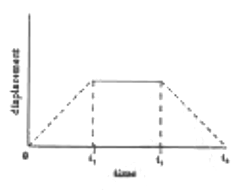
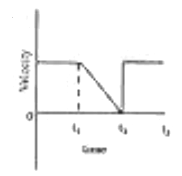
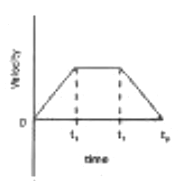
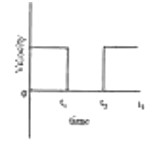
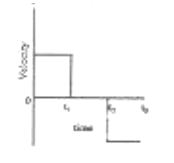
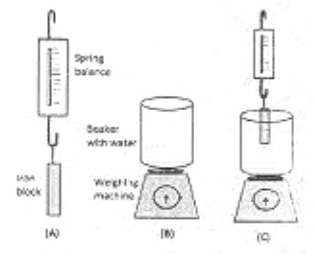
The spring balance in Fig. A reads 0.5 kg and the pan balance in Fig. B reads 3.0 kg. The iron-block suspended from the spring balance is partially immersed in the water in the beaker (Fig. C). The spring balance now reads 0.4 kg. The reading on the pan balance in Fig. C is
3.0 kg
2.9 kg
3.1 kg
3.5 kg
The ends of a rope are fixed to two pegs, such that the rope remains slack. A pencil is placed against the rope and moved, such that the rope always remains taut. The shape of the curve traced by the pencil would be a part of
A circle
An ellipse
A square
A triangle
During ice skating, the blades of the ice skater’s shoes exert pressure on the ice. Ice skater can efficiently skate because
Ice gets converted to water as the pressure exerted on it increases.
Ice gets converted to water as the pressure exerted on its decreases.
The density of ice in contact with the blades decreases.
Blades do not penetrate into ice.
Four sedimentary rocks A, B, C, and D are intruded by an igneous rock R as shown in the cross-section diagram. Which of the following is correct about their ages?
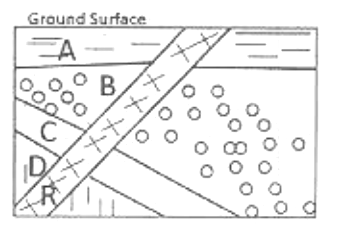
A is the youngest followed by B, C, D, and R.
R is the youngest followed by A, B, C, and D.
D is the youngest followed by C, B, A, and R.
A is the youngest followed by R, B, C, and D.
B.
R is the youngest followed by A, B, C, and D.
In the above-given diagram, R is the youngest followed by A, B, C, and D.
The strain in a solid subjected to continuous stress is plotted.
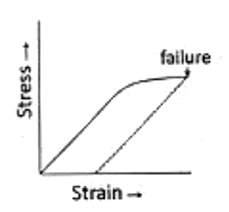
Which of the following statements is true?
The solid deforms elastically till the point of failure.
The solid deforms plastically till the point of failure.
The solid comes back to original shape and size on failure.
The solid is permanently deformed on failure.
Growth of an organism was monitored at regular intervals of time, and is shown in the graph below. Around which time is the rate of growth zero?
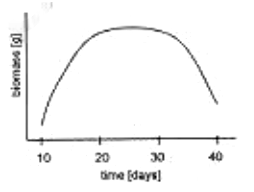
Close to day 10.
On day 20.
Between days 20 and 30
Between days 30 and 40
A Tall plant with Red seeds (both dominant traits) was crossed with a dwarf plant with white seeds. If the segregating progeny produced equal number of tall red and dwarf white plants, what would be the genotype of the parents?
TtRr x TtRR
TtRr x ttrr
TTRR x ttrr
TTRR x TtRr
Three sunflower plants were placed in conditions as indicated below.
Plant A: still air
Plant B: moderately turbulent air
Plant C: still air in the dark
Which of the following statements is correct?
Transpiration rate of plant B > that of plant A
Transpiration rate of plant A > that of plant B.
Transpiration rate of plant C – that of plant A.
Transpiration rate of plant C > that of plant A > that of plant B.
Which of the following is indicated by the accompanying diagram?
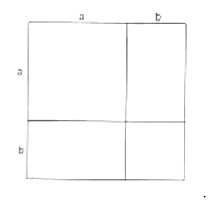
a + ab + ab2 + …. = a/ (1 – b) for |b| < 1
a > b implies a3 > b3
(a + b)2 = a2 + 2ab + b2
a > b implies –a < -b
